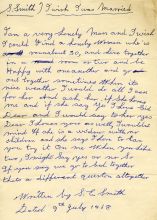“We must be allowed, and allow ourselves, to be haunted by a sense of human/ness, a sense of tragedy in the deepest human terms. We must crave to see it clarified and composed.
Few people know why tragedy is a source of deep satisfaction: they invent all sorts of psychological explanations, from emotional catharsis to a sense of superiority because the hero’s misfortunes are not one’s own. But the real source is the joy of revelation, the vision of a world wholly significant, of life spending itself, and death the signature of its completion.”
— Robert Lenkiewicz, lecture on the Philosophy of Aesthetics, 1986.
This folio of notes and illustrations dating from 1967-69 marks Lenkiewicz’s first attempt to document the lives of those he called ‘invisible people’. The sitters were frequent residents at Lenkiewicz own cramped dwellings, and were mostly lonely individuals struggling to maintain stable lifestyles. The names of some notable vagrants, such as Albert Fisher (Bishop) appear, but at this stage the notes are yet to be written, blank pages foreshadowing the large Project on vagrancy (1970-1973). A selection of these illustrations was exhibited in September 2019 at St Saviours Hall, Plymouth.
Between 1967-69 a radical social experiment in communal living took place, not in some sunny Californian utopia, but in terraced 2-bedroom homes in Plymouth’s Clifton Street, on North Hill, and Rectory Road, near the Brickfields in Devonport. On any given day, a visitor would have found themselves stepping over vagrants to reach the kitchen, with its perpetually simmering soup pot, crossing paths with Plymouth’s local hippies and bohemians. At the centre of this impromptu homeless shelter were two young mothers, Celia Mills (known as Mouse) and Monica Quirk, raising Robert Lenkiewicz’s young children Alice, Wolfe and Reuben.
Mouse recalls: ‘There would be vagrants in the bathroom, under the stairs, in the airing cupboards.’ Monica remembers that: ‘But these weren’t young homeless people – they were elderly men who had lived rough a long time, plus one woman; dear old Winnie.’
Lenkiewicz began compiling informal dossiers on his dossers, trying to keep track of their magistrate’s court appearances, stays at Moorhaven Hospital, or difficulties at the local Salvation Army hostel, from which many had been ejected for poor behaviour. And of course, he drew and painted them.
In some ways, Rectory Road was a chaotic recreation of the family home in which Robert was raised from the age of nine. His parents, Jewish refugees from Nazi Europe, opened a kosher Jewish hotel in Cricklewood in London. Lenkiewicz recalled that: ‘[It was] part old people’s home, part asylum. Mother was a sort of nursemaid to about thirty people who paid her a nominal weekly rent for board and lodging ... people who’d been dropped by their sons and daughters because they weren’t in control.’ The mostly elderly residents became the artist’s first sitters, but also his first life tutors: ‘I was introduced to all kinds of things – mental illness, human suffering and, above all, death – at a very early age and thought it salutary and thought provoking.’
At the Hotel Shemtov, Robert encountered books by Albert Schweitzer (1875-1965), a privileged organist, theologian and polymath from Alsace, who re-trained at the age of 30 as a doctor, electing to treat tropical diseases and leprosy in Gabon, rather than the gout and dyspepsia of his well-off peers.
To the young Lenkiewicz, Schweitzer seemed to have evaded a common failing of western sages: the mismatch between lofty ethical pronouncements of universal brotherhood and their frequent hostility or indifference to individual persons in need of some small personal sacrifice by the philosopher. Young Lenkiewicz also considered medicine as a career, but since art had already claimed him, he sought instead a path that would combine a devotion to aesthetics and what Schweitzer famously called ‘reverence for life’.
Lenkiewicz would recount how, during one Passover feast, he took literally the tradition of performing an act of generosity towards a ‘schnorrer’ (Yiddish for beggar) by inviting a foul-smelling tramp into the family hotel. Robert’s younger brother, Johnny, was adamant that this tale was apocryphal; but it encapsulates an important principle for the young artist – that aesthetics, liking or not liking a person, should not override humane behaviour. Lenkiewicz had resolved that one could not pick and choose who was worthy of a full measure of equality but instead that ‘all are welcome’.
List of illustrations
Drawing 1
28/2/69
363 x 212 mm
pen on paper
item 3 (passport fotos)
thurs 3. 69
330 x 205 mm
passport fotos and new clippings with religious sentiment card
watercolour (item 4)
179 x 256 mm
watercolour
item 5 PUBLIC MEETING LEAFLET
South West Regional Council on Alcoholism
1968. Jamaica Press. Devon. Hartland.
256 x 203 mm
item 6
ADDRESSES
257 x 206 mm
typed sheet
item 7
newcomer to plymouth
256 x 205 mm ink on paper
item 8
VERSE BY (GYP). ETC
330 x 205 mm
typed sheet
item 11
poem & illustrations
330 x 205 mm
ink on paper
item 15 (1)
PATRICK BRENNAN. (PADDY).
257 x 205 mm
typed sheet
item 15 (2) verso
PATRICK BRENNAN. (PADDY).
257 x 205 mm
typed sheet
item 16
COCKREN. (CORKY)
257 x 205 mm
typed sheet
item 17
'CORKY'. 20.10.68
257 x 205 mm
ink on paper
item 21
ALBERT FISHER. (THE BISHOP).
257 x 205 mm
typed sheet (attached note)
item 22
ALBERT FISHER. (THE BISHOP).
257 x 205 mm
typed sheet
item 23
ALBERT FISHER. (THE BISHOP).
320 x 220 mm
purple crayon on paper
item 26 (unpunched)
REGINALD HAWK. (REG).
257 x 205 mm
typed sheet
item 28
WALTER HUDSON. (WALLY CARROT).
257 x 205 mm
typed sheet (1)
item 29
WALTER HUDSON. (WALLY CARROT).
257 x 205 mm
typed sheet (2)
item 31
CITY OF PLYMOUTH File N0. 84746
300 x 205 mm
typed letter re: Walter Hudson
item 33
JOHN KYNANCE. (SANDRA).
257 x 205 mm
blank typed sheet
item 34
(SANDRA).JOHN KYNANCE.
297 x 205 mm
pen on paper
item 35
WINIFRED LEWIS. (WINNIE)
257 x 205 mm
typed sheet
item 36
WINIFRED LEWIS. cont.
257 x 205 mm
typed sheet
item 37
WINIFRED LEWIS. cont.
257 x 205 mm
typed sheet
item 38
WINIFRED LEWIS. cont.
257 x 205 mm
typed sheet
item 39
WINIFRED LEWIS. drawing
340 x 242 mm
pen on paper (architect's drawing)
item 40
WINNIE LEWIS. 26 AUG 1968
255 x 205 mm.
pen on paper
item 41
WINNIE LEWIS. 20.1.69
255 x 205 mm.
pen on paper
item 42
ROBERT LLOYD (COCKNEY BOB).
257 x 205 mm
typed sheet
item 43
BOB LLOYD.
180 x 115 mm
handwritten letter
item 44
HARRY SINCLAIR LORD.
257 x 205 mm
typed sheet
item 47
LESLIE RYDER. ().
257 x 205 mm
blank typed sheet
Titles of blank sheets without notes
item 48
NORMAN SHIRLEY. 23.2.69.
257 x 205 mm
typed sheet
item 49
NORMAN SHIRLEY.
257 x 205 mm
typed sheet
item 50
NORMAN SHIRLEY.
257 x 205 mm
typed sheet
item 51
8.3.69 NORMAN SHIRLEY.
257 x 205 mm
typed sheet
item 52
6.6.67 [NORMAN SHIRLEY?]
215 x 165 mm
pen on coloured card
item 53
23.2.69 NORMAN SHIRLEY
250 x 195 mm
pen on coloured paper
item 54
23.2.69 NORMAN SHIRLEY
125 x 180 mm
pen on paper
item 55
7th November, 1968
210 x 150 mm
letter (Moorhaven Hospital)
item 56
NORMAN SHIRLEY.
257 x 205 mm
typed sheet
item 58
NORMAN SHIRLEY. 14.3.69
257 x 205 mm
typed sheet
item 59
quotation (hand of Robert Lenkiewicz)
'Pale death taps with equal foot on the
hovels of the poor and the towers of kings'. Horace.
80 x 100 mm
ink on paper
item 61
THOMAS E. SLADE. (____).
257 x 205 mm
typed sheet
item 64
SYDNEY SMITH. (SID).
257 x 205 mm
typed sheet
item 65
HEALTH: SYDNEY SMITH. (SID).
257 x 205 mm
typed sheet
item 66
SYDNEY SMITH. (SID).
257 x 205 mm
typed sheet
item 67
SYDNEY SMITH. (SID).
257 x 205 mm
typed sheet
item 69
SYDNEY SMITH. (SID).
343 x 233 mm
pen on paper
item 70
SYDNEY SMITH. (SID).
318 x 215 mm
pen on paper
item 71
SYDNEY SMITH. (SID).
300 x 224 mm
pen on paper
item 72
SYDNEY SMITH. (SID).
334 x 190 mm
pen on paper
item 73
SYDNEY SMITH. (SID).
243 x 265 mm
pen on paper
item 74
[MOUSE and SYDNEY SMITH. (SID).]
320 x 315 mm (folded)
pencil on paper
item 116
WILLIAM TRIP. (BILL).
255 x 205 mm
typed sheet (blank)
item 117
BILL TRIP
345 x 336 mm
Drawing, ink on paper
drawing 2
245 x 187 mm
ink on paper
drawing 3
244 x 205 mm
ink on paper
item 118
JOSEPH TUBRIDY. (JOE).
255 x 205 mm
typed sheet
item 119
JOSEPH TUBRIDY. (JOE). (cont.)
255 x 205 mm
typed sheet
item 120
JOSEPH TUBRIDY. (JOE). (cont.)
255 x 205 mm
typed sheet
item 121
JOSEPH TUBRIDY. (JOE). (cont.)
255 x 205 mm
typed sheet
item 122
JOSEPH TUBRIDY. (JOE). (cont.)
255 x 205 mm
typed sheet
item 123
[J. TUBRIDY]
335 x 200 mm.
crayon on paper
item 124
J. TUBRIDY. 1966
335 x 185 mm.
pencil on paper
item 125
J. TUBRIDY. 1967
335 x 190 mm.
pencil on paper
item 126
ABRAHAM WEINBERG. (ABY).
255 x 205 mm
Typed sheet
item 127
Drawing of ABRAHAM WEINBERG
315 x 210 mm
pen on yellow paper
item 128
JACKSON WHITE. (JACK). [In Robert's hand]
255 x 205 mm
Typed sheet
item 129
S Smith to, Robert and Jim Pascoe. 9th July 1968
300 x 205 mm
handwritten letter









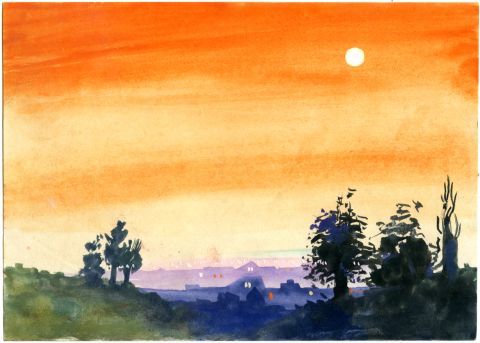
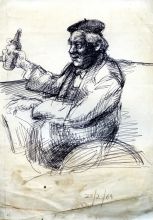
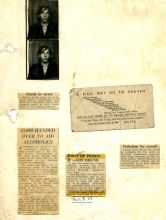

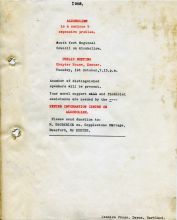
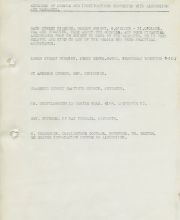
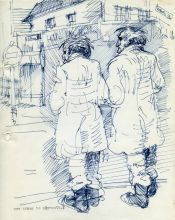
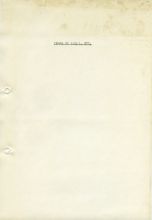
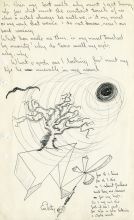
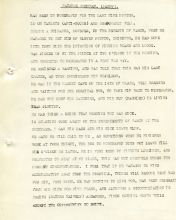
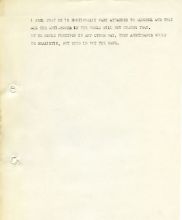
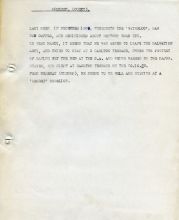
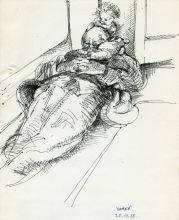
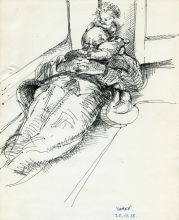
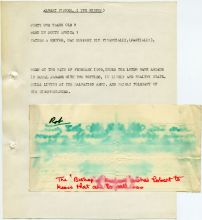
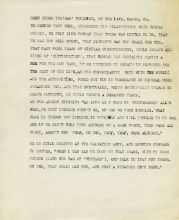
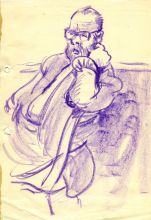
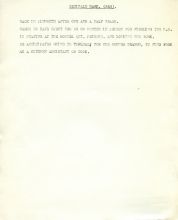
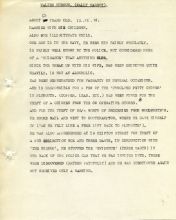
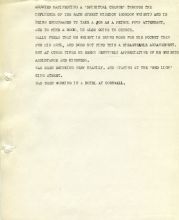


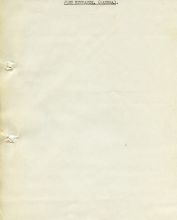
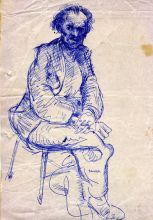
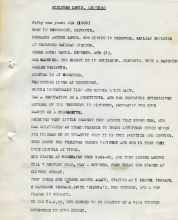
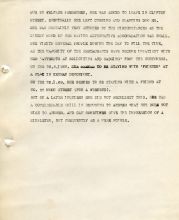
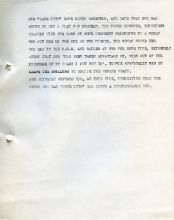
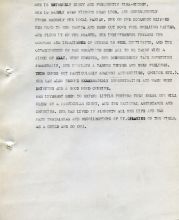
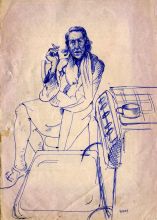
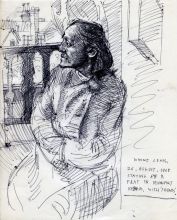
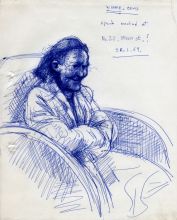
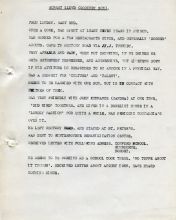
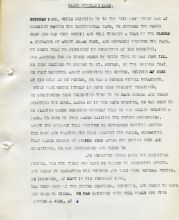
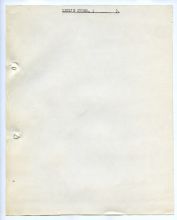
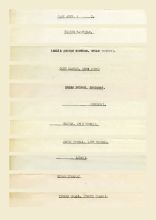
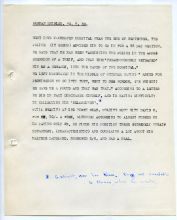
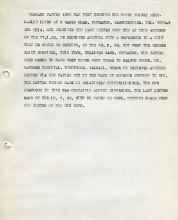
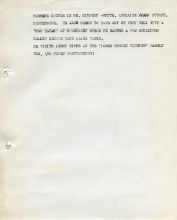
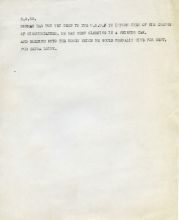
![6.6.67 [NORMAN SHIRLEY?] 215 x 165 mm pen on coloured card](https://robertlenkiewicz.co.uk/system/files/styles/medium/private/project_notebook_page_images/item052.jpg?itok=75cFg7cK)


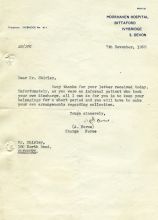
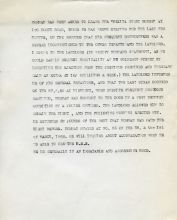

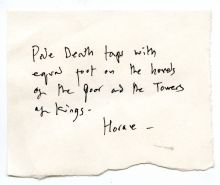
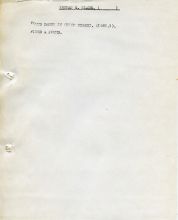

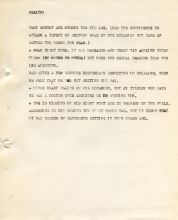
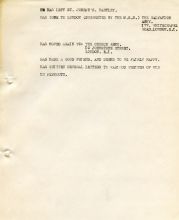
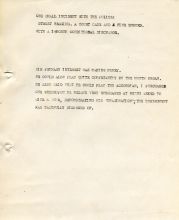
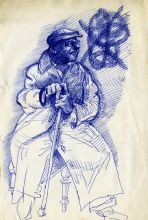
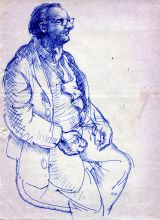
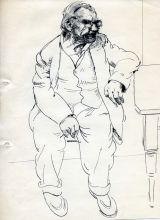
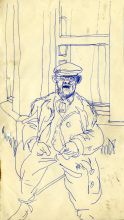
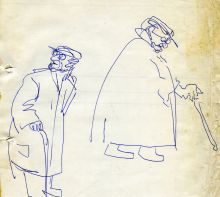
![[MOUSE and SYDNEY SMITH. (SID).] 320 x 315 mm (folded) pencil on paper [MOUSE and SYDNEY SMITH. (SID).] 320 x 315 mm (folded) pencil on paper](https://robertlenkiewicz.co.uk/system/files/styles/medium/private/project_notebook_page_images/item074_join.jpg?itok=GIxf9giM)
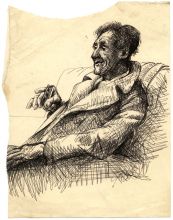
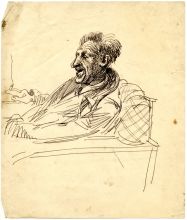
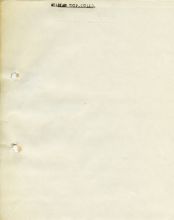
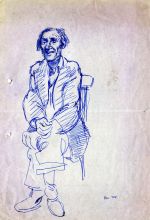
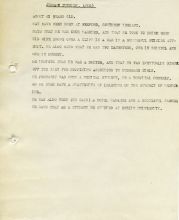
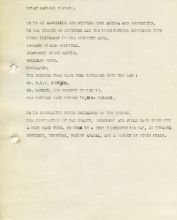
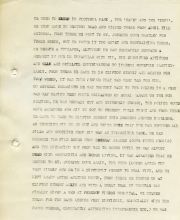
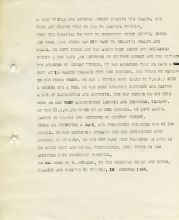
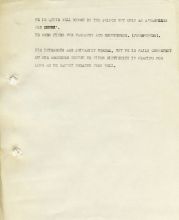
![[J. TUBRIDY] 335 x 200 mm. crayon on paper [J. TUBRIDY] 335 x 200 mm. crayon on paper](https://robertlenkiewicz.co.uk/system/files/styles/medium/private/project_notebook_page_images/item123_join.jpg?itok=G66Lp7rA)
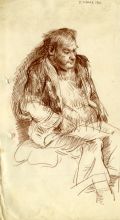
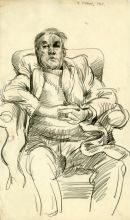
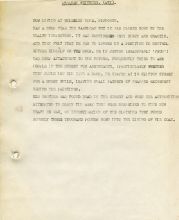
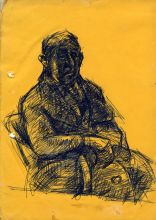
![item 128 JACKSON WHITE. (JACK). [In Robert's hand] 255 x 205 mm Typed sheet](https://robertlenkiewicz.co.uk/system/files/styles/medium/private/project_notebook_page_images/item128.jpg?itok=FjViTDUa)
